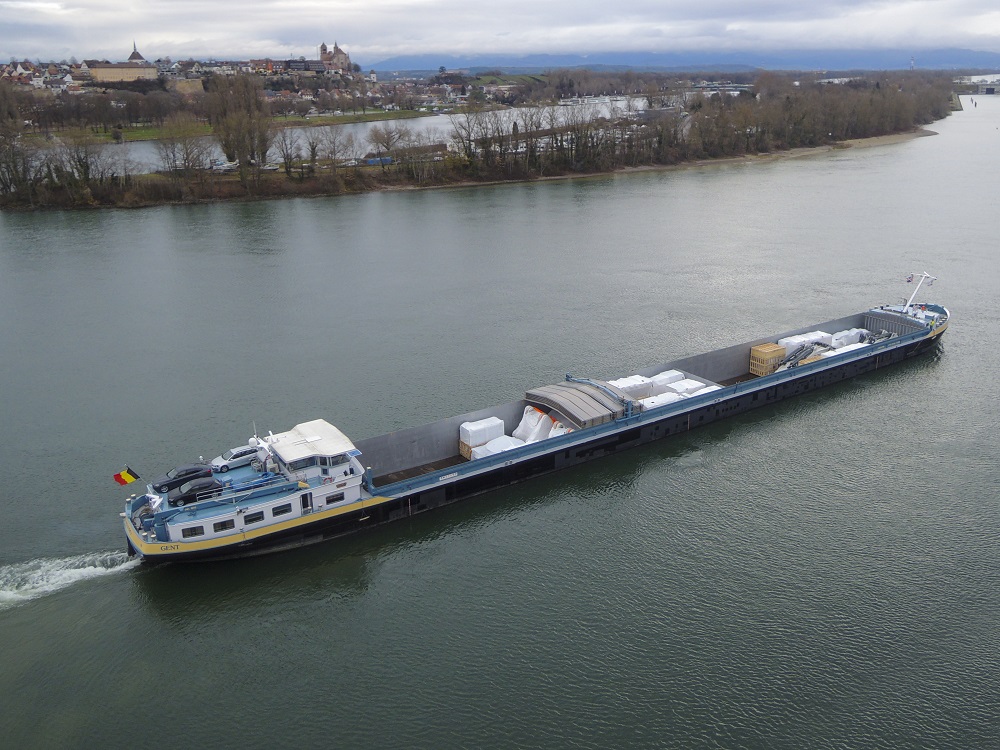Each year, about 1,000 so-called “exceptional” trucks are needed to transport the mining machines assembled by Liebherr-Mining Equipment Colmar SAS to the Belgian seaports to join mine sites around the world in the likes of Australia, Africa and Asia.
In June 2019, the company challenged itself to shift the pre-haulage to the seaports from road to river and, after 18 months of experimentation, the ecological and economical results have proven very positive, with the company deciding to pursue its efforts.
Before starting this project, Liebherr-Mining conducted an in-depth study on the modal shift, 50% financed by Voies Navigables de France (VNF – Inland waterway association) Strasbourg and with the help of an international consulting company. This funding is part of PARM (assistance plan for modal shifts) piloted by VNF and intended to support companies wishing to move to river transport.
Established in Colmar for almost 60 years, the company decided to contribute to the development and competitiveness of the region by working with local firms. Thus, the pre-haulage from the factory to the Rhine port was entrusted to the two Alsatian carriers Straumann (Colmar) and Wack (Obernai and Drulingen). The barging company is Haeger & Schmidt Logistics.
One of the first positive aspects of river transport is the reduction of environmental footprint. For the same amount of goods transported, a barge will consume three to four times less energy than a truck and emit up to five times less CO2, the company claims
By reducing road traffic, noise pollution is also reduced because river transport is a quieter mode of transport.
Over the 18 month trial, Liebherr-Mining Equipment Colmar shipped 148 machines/1,600 packages, or 27,000 t, spread over 60 barges. For the environment, this represented a saving of 800,000 km on the road and 868,000 tonnes of CO2 emissions.
River transportation comes with numerous other advantages. With an almost zero accident rate, the river is a safe mode of transport – the absence of traffic saturation and the presence of loading software guarantee the perfect stability of the boats, Liebherr says.
In terms of deadlines, a machine ready for dispatch on Friday morning can be at the seaport (Antwerp or Zeebrugge) on Monday morning. For many types of goods, if the flow is industrialised and if the company commits to a forecast volume, river transport is also a less expensive solution. Liebherr in Colmar was able to save money thanks to river transport.
This pre-haulage strategy initiated by the mining division has opened up a new path in the Liebherr Group. Other factories in the group are now studying the possibility of following the same path, the company says.











